The Tiger I Ausf E
This German Tiger I Ausf. E Heavy Tank panzerkampfwagen VI can be found at the French Tank Museum in Saumur in the Loire Valley. The Museum is called Musée des Blindés ou Association des Amis du Musée des Blindés, 1043, route de Fontevraud, 49400 Saumur, France www.museedesblindes.fr . The word Blindés means armoured.
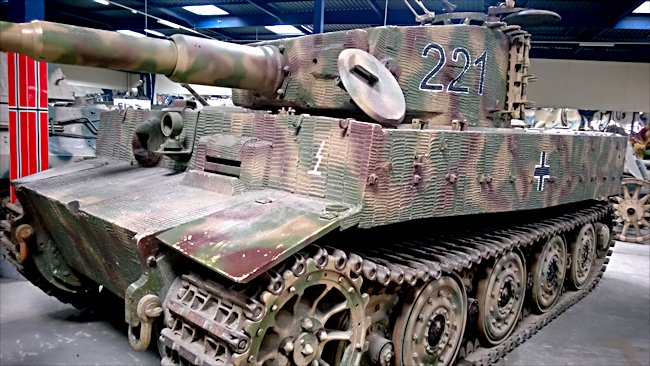
German mid 1944 Panzerkampfwagen VI Ausf.E Tiger I heavy tank with overlapping road wheels, fitted with narrow transport tracks. It originally had the tactical number 114 on its turret when it was part of the 1st Company, 1st Battalion, 102th SS Heavy Tank Regiment. On 19 August 1944, three Tiger tanks were retreating to the north-west. They encounter a British anti-tank gun battery ambush position covering the road they were using. Tiger tank 114 was the third tank. The lead Tiger manages to pass the guns with out damage and continues along the road at full speed. The second tiger tank, number 241, manages to open fire on British positions but receives two direct hits. That tank's radio operator and driver are badly injured. Tank 114 was following the second Tiger 241 too close and colides with the rear of the second tank at full speed. The dent in the upper front of the Saumur tiger is the result of the collision with the other Tiger tank.
Issued to 2nd company of the SS Heavy Panzer Battalion 102. This Tiger fought near Cauville. She was abandoned by her crew after a mechanical breakdown. The tank was recovered and repaired. She was recommissioned at Colmar with the 2nd squadron of the 6th Cuirassier Regiment. It took part in the fighting retreat all the way back to Germany.
After the war some German Panther tanks and this Tiger tank were used in the French '6eme Regiment de Cuirassier' Squadron Besnier, based in Treve, Germany. Six Panthers and one Tiger tank were used operationally by the 2nd Squadron from the French 6eme Regiment de Cuirassier. When the regiment left Treve in 1960 for Indochina (Vietnam, Laos and Cambodia) they transferred the German tanks to the French tank builder AMX (Atelier de Construction d'Issy-les-Moulineaux) tank development centre in Satory where they were used for testing. In 1965 they were transferred to a little military museum and then in 1968-70 they were transported to the French Tank Museum in Saumur. It is believed that the nunmber on the turret was painted 221 at the museum on instructions of the first Museum Director in the early 1980s as it was the number on the first Tiger tank he saw. The next time it is repainted the original numbers 114 will be put back on.
Tiger vs Sherman at point black range
After the Allies finally took the city of Caen in Normandy the next objective was to force the Germans off a five Kilometre long 30 metre high ridge to the south called Verrieres Ridge, that gave commanding views of the country the advancing infantry and tanks would have to cross. It was an ideal defensive position for the Germans.
The Germans deployed seventy two 88mm anti-tank guns, 40 Panzer Mark V Panther tanks and 80 Panzer Mark VI Tiger tanks. On 18th July 1944, nine days after entering Caen, the British and Canadian forces launch Operation Goodwood with the objective of taking Verrières Ridge.
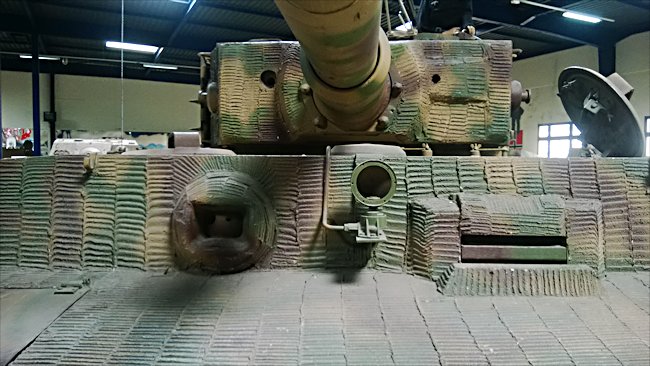
German Tiger I Ausf. E Heavy Tank panzerkampfwagen VI
Canadian Trooper Phil Lawrence was in a Sherbrooke Fusiliers Regiment M4 Sherman tank at the time. They had been ordered to advance and take a small village at the foot of the Verrières Ridge. "I remember at the time going to a village called Saint-André-sur-Orne. They had reported that there were 64 German tanks in Saint-André-sur-Orne. We said, ‘Well that probably means there is only eight tanks’. From experience we went on 10% of what they reported. So we thought to be safe we would send in 12 Shermans into the village. "
"We got in there and by God there were 64 tanks, and we could not get organised to take them on. There were a lot of people getting knocked out. It was raining and we could not see very well. It was very hard to make anything out. We lost touch with everybody. We thought we had better find a safe position and some targets. "
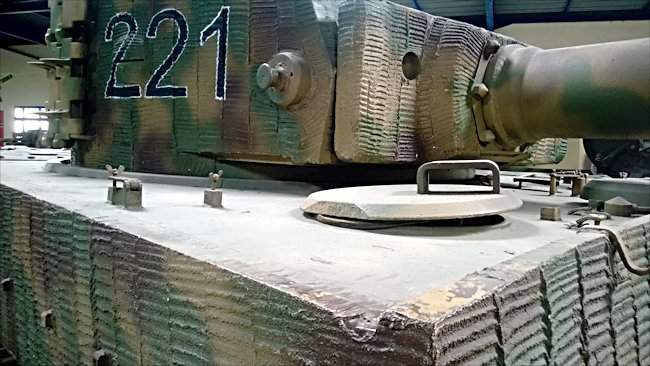
German Tiger I Ausf. E Heavy Tank panzerkampfwagen VI
"We found an excellent position by a stone building that covered our right side. In front you could hardly see us because of this tall hedge. There were 9 panthers out about 1,000 yards or so. I had taken one last look out of my turret because I was still having trouble with the mist and the rain. Then a Tiger tank came around the other side of the building and hedge and pulled right in front of us."
"They had got the same idea. What a great ambush position. They hadn’t seen us on the other side of the hedge. It was point blank range. We were facing each other. It was just the scariest dammed apparition I had ever seen."
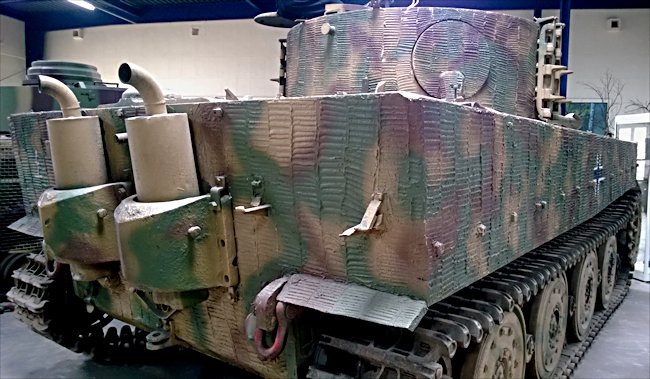
Even the rear armour of a German Tiger I Ausf. E Heavy Tank was 80mm thick
The Tiger has 100mm of frontal armour and an 88mm gun that can destroy a M4 Sherman tank 2km away. "It just loomed up like that. We were almost touching one another. So I slid an AP shell up the spout and hit him. It just bounced off. After that we fired high explosive shells as fast as we could, one after the other, bang, bang, bang, bang. I was literally just holding the firing button down, recoiling, loading, firing, recoiling, loading, firing. I was praying the shells were going in. " The shells were hitting the Tiger Tank's turret which had 120mm armour. The nominal armour thickness of the Tiger reached up to 200 mm at the gun mantel. There was no way any of the Sherman tank's shells, AP or HE, were going to penetrate that thickness of armour even at point blank range.
"Then he fired back. There are no words that can convey the incredible violence of that strike. The AP shell hit the top of our turret. It looked like someone had taken a welding torch and burnt a channel on the top of the turret front to back. Driver revers hard right. Our co-driver was driving and he was not a very good driver. When he went to go into reverse he revved up the engine. The real driver grabbed the hand throttles and rammed the gear stick into reverse. He yelled into the face of the co-driver, ‘Let out that clutch and get the hell out of here’, and so we went shooting back."
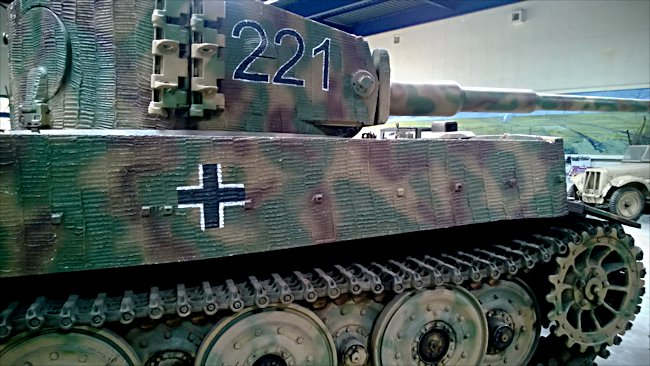
German Tiger I Ausf. E Heavy Tank had 80mm of armour on the side of its turret
The Sherbrooke Fusiliers loose half of their tank strength. Other units suffer similar losses and are forced to retreat. Operation Goodwood is a disaster. British Sherman tank crew member Lance Corporal Ken Tout, 1st Northamptonshire Yeomanry, remarked, "The Allies sent 800 tanks across that open ground south of Caen and 400 of them were knocked out. The Germans were up on the Verrières Ridge were able to see for miles and miles. Along those miles the Germans were entrenched. In farm houses they had hidden away their big guns. They were able to see everything that moved. They were able to cover the whole area with their 88mm anti-tank guns."
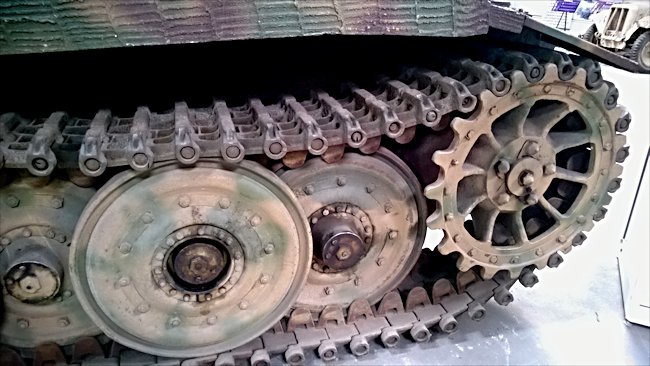
On the 21st July 1944 the offensive against Verrières Ridge is called off as the enormity of the loses sink in. in just four days the Allies loose just over 6,000 men and the Germans remain very much in control of Verrières Ridge.
The Tiger tank in Vimoutiers, Normandy, France
On the outskirts of the Normandy town of Vimoutiers you will find a preserved German Tiger I Ausf. E on the D979 heading towards Gacé. There are only eight surviving Tiger I tanks left. France has two examples. It was abandoned by its tank crew after it ran out of fuel during the battle for the Falaise pocket August 1944. It needs to be taken care of better. It is a rare beast. It should not be left our side to rust away.
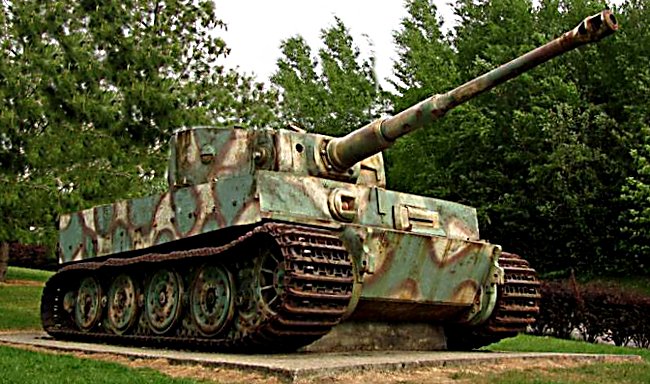
Where can I find other preserved Tiger Tanks?
- Bovington Tank Museum, England (Running)
- Vimoutiers, Normandy, France
- German Tank Museum, Munster, Germany
- French Tank Museum, Saumur, France
- Military Historical Museum, Lenino-Snegiri, Russia
- Tank Museum, Kubinka, Russia
- National Armor and Cavalry Museum, Fort Benning, GA, USA
- Source - Pierre-Oliver Buan - http://the.shadock.free.fr/Surviving_Panzers.html
WW2 tank books

